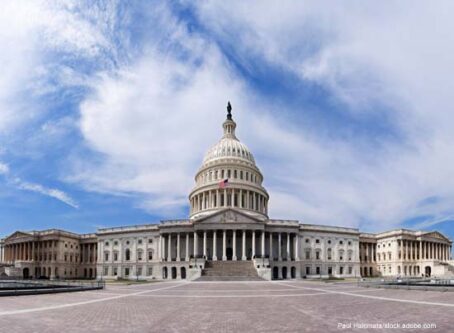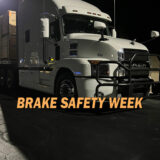Highway safety group release 2018 Roadmap of State Highway Safety Laws
Are more laws needed to reduce road fatalities? According to Advocates for Highway and Auto Safety, the answer is a resounding “yes.” Advocates recently released its 15th annual Roadmap of State Highway Safety Laws, detailing which states have optimal traffic safety laws and which laws need to be enacted.
Advocates hosted a news conference on Monday, highlighting its 2018 state law roadmap. Speakers at the event included Janette Fennell of KidsAndCars.org; Alan Maness, vice president of federal affairs for State Farm Insurance; Colleen Sheehey-Church, national president for Mothers Against Drunk Drivers, Melissa Wandall, president of National Coalition for Safer Roads; Georges Benjamin, executive director of the American Public Health Association; and Jackie Gillan, president emeritus of Advocates for Highway and Auto safety.
According to the report, more than 400 additional laws are needed across all states and D.C. to fully meet Advocates’ recommended optimal safety laws. No states have adopted all 16 optimal laws.
The report grades states and the District of Columbia in five categories: occupant protection, child passenger safety, teen driving (graduated driver licensing programs), impaired driving and distracted driving. States also receive an overall score combining the five categories.
Occupant protection
Advocates recommends three optimal laws regarding occupant protection: primary enforcement front seat belt law, primary enforcement rear seat belt law and all-rider motorcycle helmet law.
Only five states and D.C. meet all three requirements: California, Louisiana, Mississippi, Oregon and Washington. Twenty-two states have two of three, 13 states have one of the optimal occupant protection laws and 10 have none of the three laws enacted.
According to the National Highway Traffic Safety Administration, nearly 15,000 lives of passengers ages 5 and older were saved in 2016. An addition 2,456 could have been saved with 100 percent participation of safety belts.
Child passenger safety
With only two optimal laws in this category – rear facing through age 2 and booster seats – only five states have adopted both: California, New Jersey, Oregon, Rhode Island and South Carolina. In addition to D.C., 31 states have not adopted either of the two optimal child passenger safety laws.
Booster seat laws “require that children who have outgrown the height and weight limit of a forward-facing safety seat be placed in a booster seat that should be used until the child can properly use the vehicle’s seat belt, when the child reaches 57 inches in height and age 8,” according to the report.
Teen driving
With the most optimal law requirements, Advocates recommend six laws:
- Minimum age of 16 for learner’s permit
- Six-month holding period provision
- 50 hours of supervised driving provision
- Nighttime driving restriction provision
- Passenger restriction provision
- Age 18 for unrestricted license
Only two states – Delaware and New York – received a green rating, which requires adoption of at least five of six optimal graduated driver licensing provisions. More than 30 states have two to four of the suggested laws in place. No state has adopted all six of the optimal laws.
Impaired driving
More states received a favorable rating when it comes to impaired driving. Advocates has listed three optimal laws: ignition interlock devices for all offenders, child endangerment laws, and open container laws. Twenty states have adopted all three, 10 states have the ignition interlock law, and one of the other two and 20 states have a red rating with one or none of the optimal laws. States without the ignition interlock law automatically scored a red grading.
According to MADD, ignition interlock laws have stopped more than 1.77 million attempts to drive while drunk. A University of Pennsylvania study reveals that ignition interlock laws reduced alcohol-involved crash fatalities by 15 percent.
Child endangerment laws increase DUI penalties when a minor child is in the vehicle. Every state except New Mexico, South Dakota and Vermont has adopted a child endangerment law.
Federal legislation encourages states to adopt laws that ban open containers of alcoholic beverages in the entire passenger area of a vehicle, including unlocked glove compartments and other accessible storage areas. All but nine states enforce an open container law pursuant to federal requirements.
Distracted driving
Advocates requires states to adopt all driver text messaging restrictions laws and GDL cellphone restriction laws to meet optimal distracted driving safety. Similar to impaired driving laws, the majority of states are on board with distracted-driving laws.
Thirty states and D.C. have enacted both distracted driving laws. Of the remaining states, only six have neither of the laws in place: Arizona, Florida, Missouri, Montana, Nebraska and South Dakota.
Only seven states have not banned text messaging for all drivers. To date, only 19 states have yet to install a GDL cellphone restriction.
Overall scores
When calculating overall scores, Advocates did not hand out a green rating for any state that did not have a primary enforcement seat belt law covering passengers in all seating positions (front and rear) or has repealed an existing all-rider motorcycle helmet law within the previous 10 years.
With that said, only six states and D.C. qualified for a green rating: California, Delaware, Louisiana, Oregon, Rhode Island and Washington. A yellow rating requiring six to 10 of the 16 optimal laws was given to 31 states. Thirteen states received a red rating, which indicates fewer than seven of the 16 optimal safety laws.
Rhode Island has 13 of 16 laws in place, more than any other state. The three missing laws include all-rider motorcycle helmets, graduated driver licensing – stronger nighttime restrictions and GDL – age 18 for unrestricted. Among the six states with a green rating, GDL laws were the most popular missing laws.
Ranking at the bottom is South Dakota with only two of 16 laws being enforced. The laws South Dakota have in place are graduated driver licensing nighttime restrictions and open container laws. Ironically, GDL nighttime restrictions is a commonly missed law across the nation.
Large truck safety
Although states were not graded on large truck safety laws, Advocated included a small section in the beginning of the report addressing such laws.
“Available safety technologies such as speed limiting devices and AEB could already be preventing crashes and mitigating severity if they were required on the entire fleet,” the reports suggests. “Further, trucks should be equipped with underride guards to prevent horrific and violent crashes when a vehicle goes under the rear or side of a truck.”
Bipartisan bills are making the rounds in both the House and Senate that would require underride guards on trucks and trailers.
Advocates also encourages the use of lane departure warning systems and advanced driving assistance systems in large trucks. Many of those technologies are already in place in newer trucks. However, they are not required and are often add-ons for an additional cost.
To read the full report, click here.









